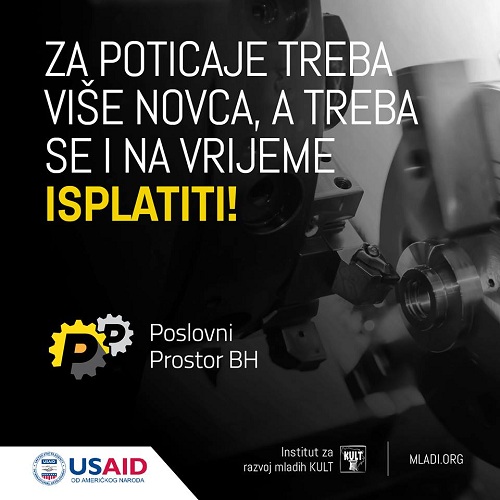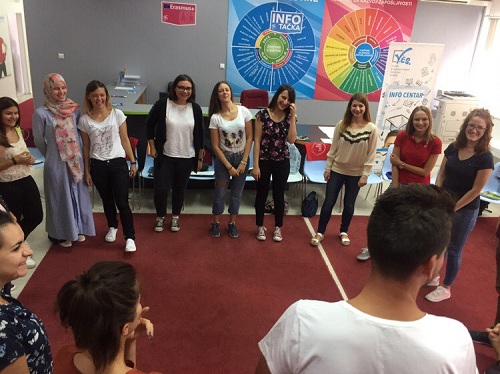Every year the media shows us farmers destroying their milk, raspberries, taking to the streets, protesting, fighting for their rights. They have announced protests this year as well, since they have not received the incentives they are owed for as far back as 2014. They are asking for payments for 2015, part of 2016, and the second quarter of 2017.
Should they wait? More importantly, can they afford to?
According to the results of the Analysis of budget incentives for the economy in BiH in 2015, with proposed measures to improve the award process, conducted by the Institute for Youth Development KULT, in 2015 agriculture received more than 84 million in incentives, and the entire economy was boosted with 211 million BAM. Is 84 million BAM a year enough to develop agriculture?
Incentives for agriculture are decreasing every year. In 2015, they were cut by 92 million BAM compared to 2013 and 63 million compared to 2014!
40% of the total amount of funds allocated for developing the economy was injected into agriculture, which makes this branch the most supported one when it comes to budget incentives. 80% of the funds were grants and 20% were loans.
Why is agriculture in trouble and what can we do?
The only branch more profitable than agriculture in BiH is real estate trade, and a single employee in agriculture generates 94,000 BAM every year.
Agriculture is important for the GDP as well, considering the fact that it comprises 4.2% of the GDP with 1.8% of employed persons in FBiH, and 9.3% of the GDP in Republika Srpska. Still, the productivity in agriculture is unsatisfactory compared to the productivity of this sector in EU countries and our neighboring countries. This is one the reasons why domestic agricultural products are not competitive on the market. Boosting productivity is necessary for improving the competitiveness of domestic product home and abroad, keep existing job and generate new ones, and increase economic growth. Since agricultural products are not competitive in prices, nor in terms of certificates vouching for the level of quality demanded by EU countries where domestic products could be sold, the sales of BiH products is hindered, which puts our farmers in a difficult situation.
The situation is more difficult when incentives are late, which they are – even several years late. Since this is not the case in EU countries, imported products become more competitive.
Problems faced by BiH farmers include: unregulated land, technological outdatedness compared to the EU and other competitors, untilled fertile land, lack of organization among farmers which prevents them from procuring cheaper raw materials and improves their chances of better wholesale prices, no channels for launching farming products, no quality certification, irregular incentive payments, etc. Alliance of berry farmers state that “the state incentive system in BiH is very specific since we have local, cantonal and entity incentives, and they’re not aligned. You’re always at the mercy of someone else, and you depend on the good will of these levels of governments, which often do not recognize the importance of investing in a particular area. We need a strategy for incentivizing agriculture.”
The only way of giving farmers a better future, is for the government to invest in technologies and certifying product quality, training farmers and helping them organize to enable cheaper procurement of raw material and more secure placement of products at reasonable prices, regular payments of incentives, etc. All of this should be listed in an obligatory state-level strategy for developing agriculture, in order to ensure easier access to EU funds. BiH farmers themselves, whose numbers are increasingly dwindling, are calling for this to happen.
Many BiH farmers live off their work, and those who decide not to live off the land make the brave and proactive decision to live outside of BiH.
Where are funds being invested?
The majority of funds were invested in dairy cattle – 38%, and 12.5% was invested in other activities (including sheep and goat farming, procuring mechanical equipment, supporting farmers’ associations, procuring greenhouses, cattle vaccination, etc.). 8% was invested in poultry and grain farming and, the least amount of funds – less than 1% – was invested in viticulture and water management. Bee keeping, fishing and forestry received less than 2% of the funds. According to BiH entrepreneurs, fruit production is the most promising branch of agriculture, and only 7.5% of the total amount is invested in this branch. Dairy cattle and poultry farming are deemed as particularly promising sub-branches. The importance of incentives is reflected in the fact that the most incentivized branch – diary cattle – is the most developed one.















Leave a comment